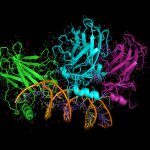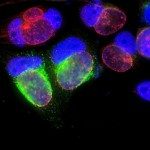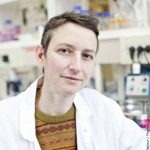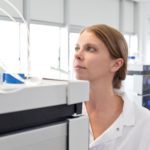Link to Pubmed [PMID] – 32134139
Link to DOI – 10.15252/embj.2019102166
EMBO J 2020 04; 39(8): e102166
Transglutaminase 2 (TG2) is a ubiquitously expressed enzyme with transamidating activity. We report here that both expression and activity of TG2 are enhanced in mammalian epithelial cells infected with the obligate intracellular bacteria Chlamydia trachomatis. Genetic or pharmacological inhibition of TG2 impairs bacterial development. We show that TG2 increases glucose import by up-regulating the transcription of the glucose transporter genes GLUT-1 and GLUT-3. Furthermore, TG2 activation drives one specific glucose-dependent pathway in the host, i.e., hexosamine biosynthesis. Mechanistically, we identify the glucosamine:fructose-6-phosphate amidotransferase (GFPT) among the substrates of TG2. GFPT modification by TG2 increases its enzymatic activity, resulting in higher levels of UDP-N-acetylglucosamine biosynthesis and protein O-GlcNAcylation. The correlation between TG2 transamidating activity and O-GlcNAcylation is disrupted in infected cells because host hexosamine biosynthesis is being exploited by the bacteria, in particular to assist their division. In conclusion, our work establishes TG2 as a key player in controlling glucose-derived metabolic pathways in mammalian cells, themselves hijacked by C. trachomatis to sustain their own metabolic needs.





